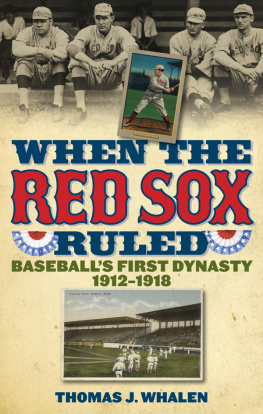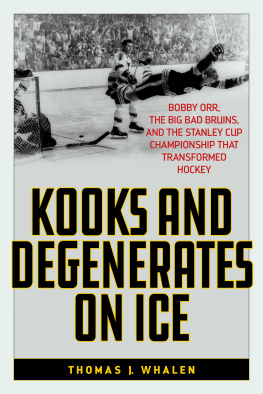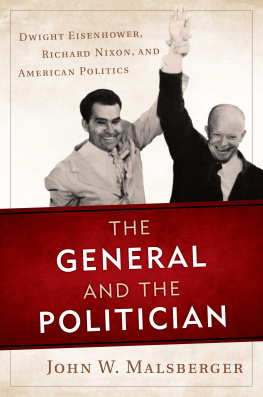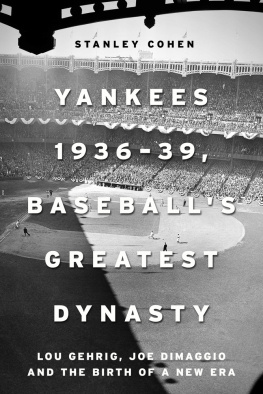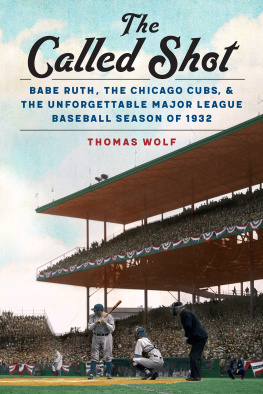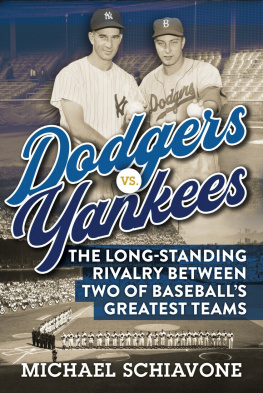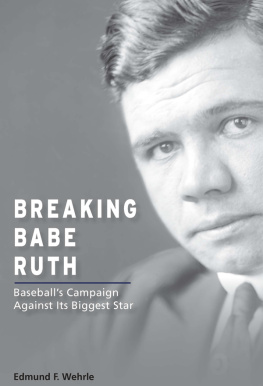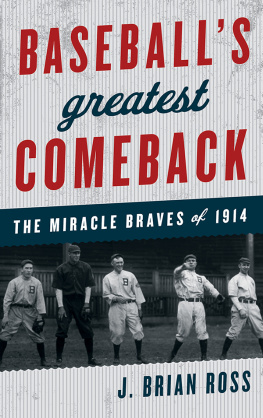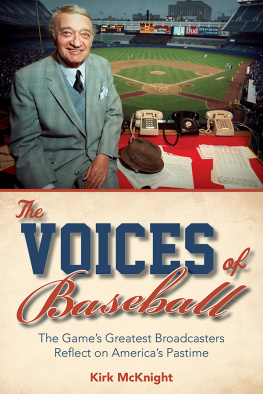When the Red Sox Ruled
When the Red Sox Ruled
Baseballs First Dynasty,
19121918
Thomas J. Whalen
IVAN R. DEE
Chicago
Published by Rowman & Littlefield Publishers, Inc.
A wholly owned subsidiary of The Rowman & Littlefield Publishing Group, Inc.
4501 Forbes Boulevard, Suite 200, Lanham, Maryland 20706
http://www.rowmanlittlefield.com
Estover Road, Plymouth PL6 7PY, United Kingdom
Distributed by National Book Network
WHEN THE RED SOX RULED. Copyright 2011 by Thomas J. Whalen
All rights reserved, including the right to reproduce this book or portions thereof in any form. For information, address: Ivan R. Dee, Publisher, 1332 North Halsted Street, Chicago 60642, a member of the Rowman & Littlefield Publishing Group.
Manufactured in the United States of America and printed on acid-free paper.
www.ivanrdee.com
Library of Congress Cataloging-in-Publication Data:
Whalen, Thomas J.
When the Red Sox ruled : baseballs first dynasty, 19121918 / Thomas J. Whalen.
p. cm.
Includes bibliographical references.
ISBN 978-1-56663-745-9 (cloth : alk. paper) ISBN 978-1-56663-902-6 (electronic)
1. Boston Red Sox (Baseball team)History20th century. I. Title.
GV875.B62W53 2011
796.357640974461dc22 2010048052
In loving memory of MaryAnne Whalen Spinale, 19282008
Preface
The sports equivalent to hell freezing over occurred on the night of October 26, 2004. The Boston Red Sox, long the bridesmaid of professional baseball, managed to put aside eighty-six years of heartbreaking loss and humiliation by completing a four-game sweep of the St. Louis Cardinals in the World Series, thereupon becoming champions for the first time since Woodrow Wilson occupied the Oval Office. In the delirious champagne-soaked Boston clubhouse afterward, twenty-one-game winner Curt Schilling proclaimed that the club was the greatest Red Sox team in history.
Given the dramatic nature of his teams victory, Schillings exuberance is understandable, if somewhat misplaced. The 2004 Red Sox were a good team, a very good team, but hardly in the same class as their Fenway forebears of 19121918. For this earlier Beantown edition bestrode the narrow world of major league baseball like a colossus, capturing four World Series titles in seven seasons.
Blessed with Hall of Fame performers like Babe Ruth, Tris Speaker, and Harry Hooper, and near greats like Smokey Joe Wood, Duffy Lewis, Larry Gardner, Jack Barry, and Carl Mays, the Sox were easily the most dominant club of the Deadball Era, a period that ran roughly from 1900 to 1919 and was so named due to the softer composition of the ball used in competition. Hitters couldnt drive the ball very far, and one run was often the difference between victory and defeat, noted the historian John M. Rosenburg. But this sobering reality did not seem to deter the Sox.
Outside of the lordly New York Yankees of 19361943, 19471953, 19561962, and 19962000, who won four or more championships apiece within a similar time frame, no other ball club in the twentieth century or beyond has surpassed Bostons run of sustained excellence.
We won the American League pennant in 1912, 15, 16, and 18, and in between we finished second twice, said outfielder Harry Hooper, a major contributor to the teams success. They never did beat us in the World Series. Never. We played four different National League teams in four different World Series and only one of them even came close.... The best team in baseball for close to a decade!
How the Red Sox were able to accomplish this unique feat is the subject of this book. Like all tales of heroic accomplishment, however, it is best to start at the very beginning.
Acknowledgments
In finishing this book, I am sadly reminded of two family members who will not get the opportunity to enjoy it: my late mother, MaryAnne Whalen Spinale, and my late uncle, James J. Fitzgerald.
My mom was my biggest booster and without a doubt exercised the greatest positive influence on my life. Her uproarious sense of humor and zest for living still bring warm memories. I cant thank her enough for all the unqualified love and support she provided. Im sure she is up there in Paradise along with my late father, Herman T. Whalen, and late stepfather, Joseph D. Spinale, having a grand ole time singing among the celestial choir.
Uncle Jimmy was a member of the Greatest Generation who served his country faithfully and well during the Second World War. A quiet and dignified man, he moved through life with an effortless grace. He will be greatly missed.
As always, Dan Hammond and Christopher Callely bucked up my spirits when I needed it the most. They are the embodiment of what true friendship is all about. Ditto for Don Clemenzi and Steve Blumenkrantz, who provided welcomed encouragement and strength. Former Harvard Crimson star outfielder Elizabeth Crowley came through in the clutch, offering insightful comments and invaluable advice on improving the manuscript. She has my deepest respect and admiration.
Brian Walsh did a superb job as my research assistant. I wish him well in his new academic career. Thanks also to Fred Hammond, my old high school coach and history mentor who continues to inspire.
A special debt of gratitude is owed to the staffs of the Baseball Hall of Fame, the Holy Cross Archives, and the Boston Public Library. Their assistance and professionalism are greatly valued. Fellow Bates grad and baseball fanatic Chris Fahy earns a special mention for his unflagging enthusiasm for the project. Jon Sisk, Darcy Evans, and Ivan R. Dee did a marvelous job of getting the book ready for publication. They are true pros.
Others to single out for strong praise are Mary Alston-Hammond, Scott Ferrara, Wayne Ferrari, Joseph and Kristin King, Bob Connors, Pat and Hillori Connors, Laureen Fitzgerald, Gayle Clemenzi, Jodi Blumenkrantz, Tom Testa, Joseph and Theresa Dever, Linda Wells, Jay Corrin, Jim Dutton, Barbara Storella, Ben Varat, Jean Dunlavy, Edward Rafferty, June Grasso, Maureen Foley-Reese, Michael Kort, Shelly Hawks, Mary Ducharme, Tracey Nickerson, Matt Dursin, Matt Hallgren, Naomi Lomba-Gomes, John Mackey, Bill Tilchin, and Robert Wexelblatt.
Finally, I would be remiss if I didnt mention Teddy, my feisty and mischievous Siamese cat who left this world all too soon. She never failed to put a smile on my face and I will never forget her.
Chapter one
The Cradle of Baseball (18711911)
On a December day in 1912, an otherwise staid gathering of uppercrust concert-goers at Bostons famed Symphony Hall were aroused from their torpor by the sight of Isabella Stewart Gardner entering the building. The elderly yet flamboyant Gardner, widely acknowledged as the citys first Patroness of the Arts, was sporting a white headband emblazoned with the legend Oh you Red Sox in red letters. According to one local wag, It looked as if the woman had gone crazy... almost causing a panic among those in the audience who discovered the ornamentation, and even for a moment upsetting [the orchestra] so that their startled eyes wandered from their music stands.
The august assemblage need not have registered such shock and consternation. Since its shadowy origins in the early days of the nineteenth century, the game of baseball had always held a unique appeal to Bostonians, even those with the advanced social pedigree of Gardner. Pitching great Albert Goodwill Spalding later put it best when he said [j]ust as Boston was the cradle of liberty for the Nation, so also was it the cradle in which the infant game was helped to a healthy maturity. Indeed, it was in Boston that the first full-fledged dynasty in baseball history was born: the Red Stockings of 18711875.

